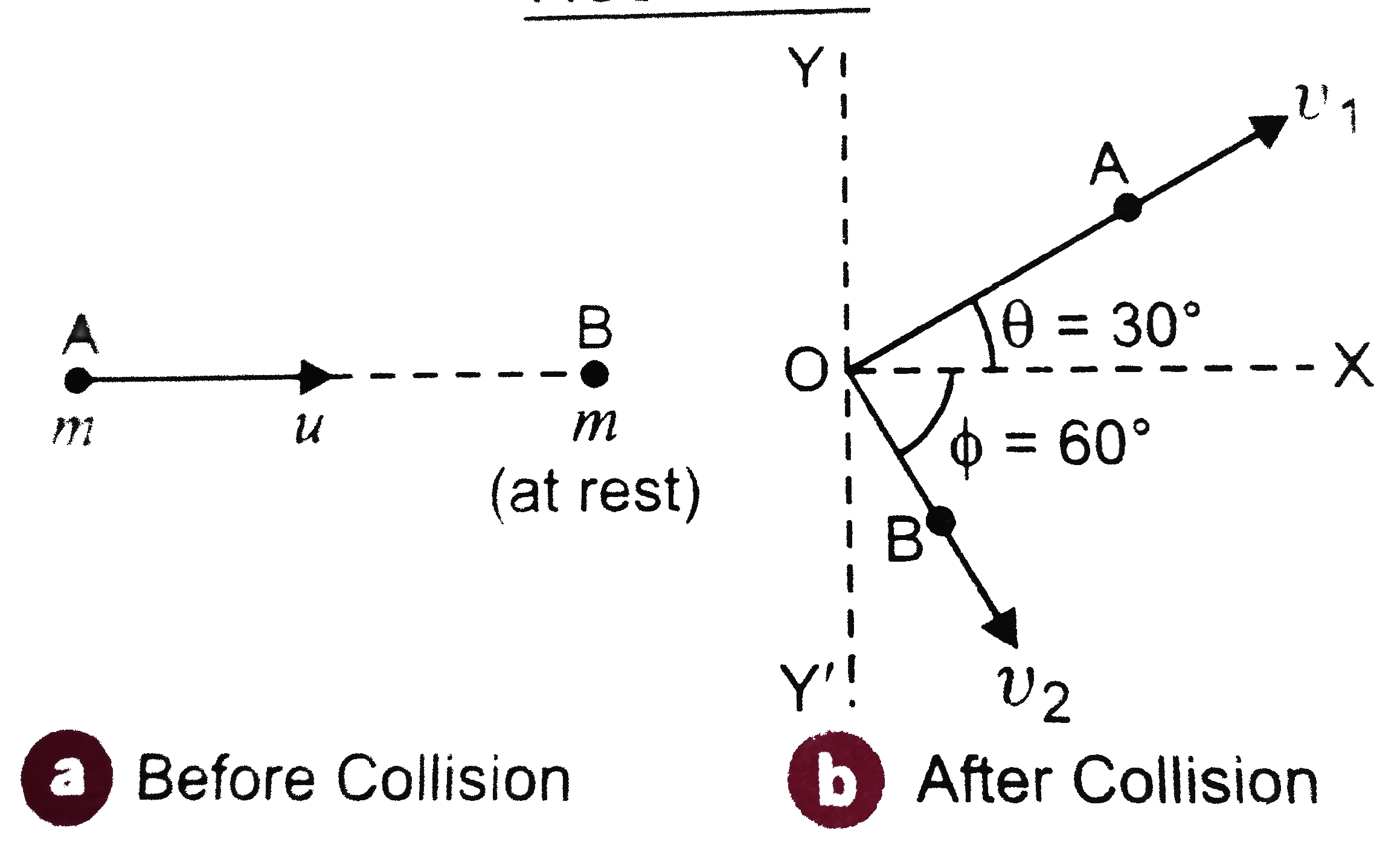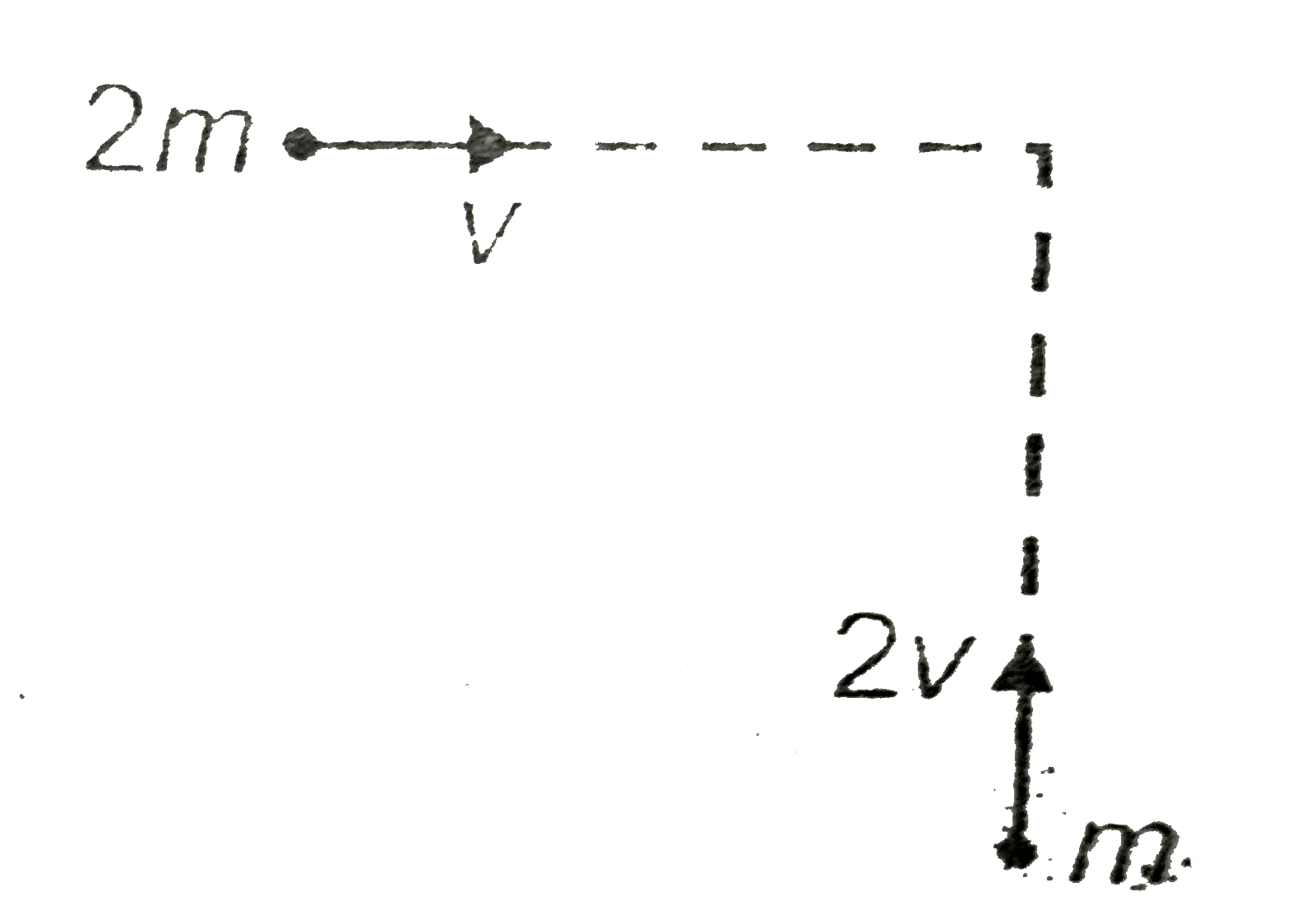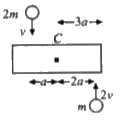Two particles A and B of masses m and 2m are moving along the X-axis and Y-axis respectively with the same speed v. They collide at the origin and coalesce into one body, after the collision. What is the velocity of this coalesced mass? What is the loss of energy during this collision?
Figure shows particles A and B before collision and Figure the coalesced mass after collision.
In figure, we have taken velocity of combinedmass (3m) as →V making an angle α with positive X-axis.
Using law of conservation of linear momentum
(i) along X-axis
mv=3mVcosα ...(i)
(ii) along Y-axis
2mv=3mVsinα ...(ii)
Dividing (ii) by (i), we get
2=tanαorα=tan−1(2)=63.4∘
Squaring (i) and (ii) and adding, we get
(3mV)2(cos2α+sin2α)=m2v2+m2v2
=5m2v2
V2=59v2orV=√53v
No, total K.E.before collision,
K1=12mv2+12(2m)v2=32mv2
total K.E. after collision,
K2=12(3m)V2=12(3m)59v2=56mv2
Loss of K.E. during the collision,
ΔK=K1−K2
ΔK=32mv2−56mv2=23mv2

Topper's Solved these Questions
- WORK, ENERGY AND POWERBook:PRADEEPChapter:WORK, ENERGY AND POWERExercise:Conceptual Problems
Explore 27 Videos
- WORK, ENERGY AND POWERBook:PRADEEPChapter:WORK, ENERGY AND POWERExercise:Very Short Anwer Question.
Explore 54 Videos
- WORK, ENERGY AND POWERBook:PRADEEPChapter:WORK, ENERGY AND POWERExercise:Curiosity questions
Explore 2 Videos
- THERMODYNAMICSBook:PRADEEPChapter:THERMODYNAMICSExercise:Assertion- Reason Type Questions
Explore 19 Videos
Similar Questions
Two particles, A and B of masses m and 3m, are moving along X and Y axes respectively, with the same speed v. They collide at the origin, and coalesce into one body, after the c ollision. What is the velocity of this coalesced mass ?
View SolutionTwo bodies of masses m and 2m are moving along positive x and y axes respectively with equal speed 4 ms−1. They collide at origin and stick together. The final velocity of combined mass is
View Solution
Knowledge Check
Two bodies of masses m and 2m are moving along positive x and y axes respectively with equal speed 4ms−1. They collide at origin and stick together. The final velocity of combined mass is
A(4ˆi+8ˆj)ms−1B(43ˆi+83ˆj)ms−1C(43ˆi+8ˆj)ms−1D(4ˆi+83ˆj)ms−1Two particles of mass m and 2 m moving in opposite directions collide elastically with velocities v and 2v. Find their velocities after collision.
A0, 3vB1, 3vC0, 1vD0, 4vTwo equal masses m1 and m2 moving along the same straight line with velocites +3m/s and −5m/s respectively collide elastically. Their velocities after the collision will be respectively.
A+4m/s for bothB−3m/sand+5m/sC−4m/sand+4m/sD−5m/sand+3m/s
Two particles of masses m and 2m moving in opposite directions collide elastically with velocity 2v and v, respectiely. Find their velocities after collision.

View SolutionTwo particles of mass 2m and m moving with speed v and 2v respectively pependicular to each other collides perfectly inelastically, then

Speed of the particles after collision
View SolutionA uniform bar of length 6a and mass 8m lies on a smooth horizontal table. Two point masses m and 2m moving with the same horizontal speed 2v and v respectively, strike the bar as shown in the figure and stick to the bar after collision. Denoting angular velocity (about the centre of mass), total energy, and centre of mass velocity after collision by ω, E and vC respectively, we have after collision

View SolutionA body of mass m moving with a velocity v in the x direction collides with another body of mass M moving in y direction with a velocity V. They coalesce into one body during collision.
View SolutionA body A of mass 5kg is moving along the x-axis with a velocity 2m/s. Another body (B) of mass 10 kg is moving along the y-axis with a velocity √3m/s. They collide at the origin and stick together. What is the final velocity of the combined mass?
View Solution

